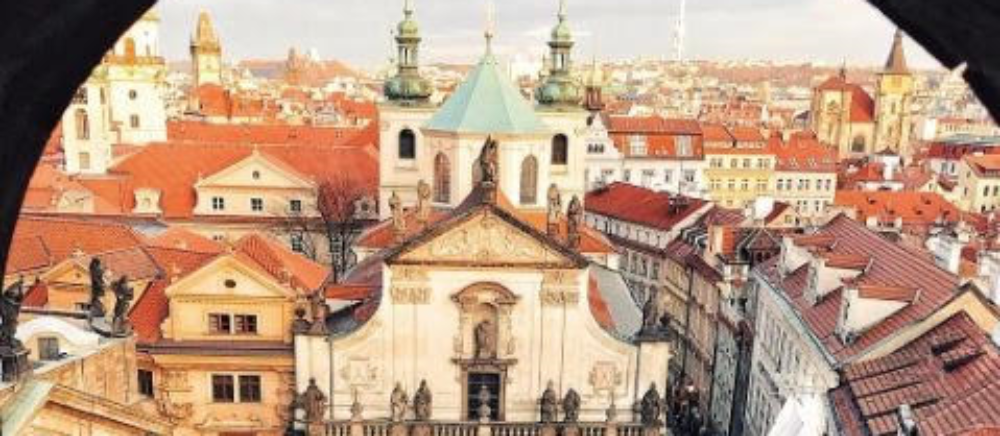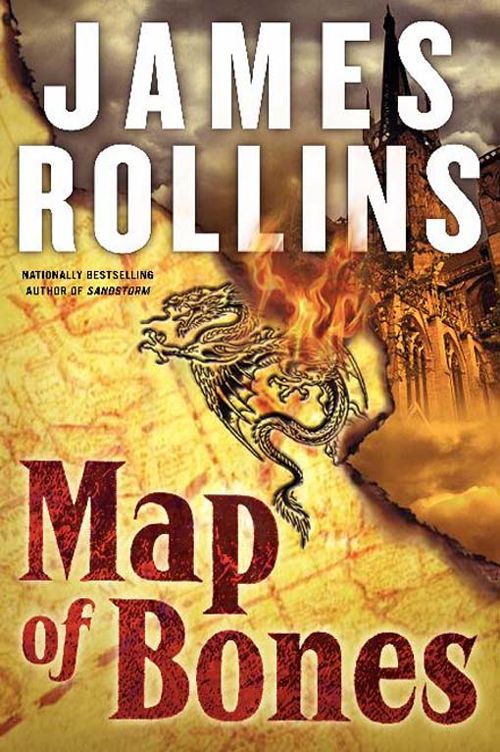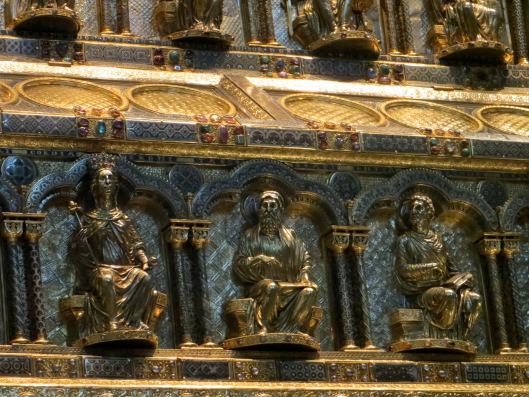Eastern Orthodox icon of the birth of Christ by St. Andrei Rublev, 15th century. Note that the shepherd speaking with St. Joseph in the lower left is shown in profile, a pose reserved only for this shepherd, the Devil, and for Judas Iscariot and which indicates their interior wickedness and efforts to hide themselves from God. Also, the cave in which Christ is born is painted with the same absolute black pigment — unmixed with any other dark colors, which is more usual — as is the tomb of Christ or the abyss of Hell, into which the Divine Presence has entered.
We talk about Christ being born in a manger, in a stable and most crèche scenes have the manger inside a straw-roofed hut. But traditional depictions based on ancient models, like the icon above, show the manger inside a cave instead of a straw-roofed hut. The Church of the Nativity in Bethlehem also marks the traditional place of the manger inside a cave beneath the church. Why?
In the Middle East, animals were often stabled in the small caves that dotted the countryside. The inn at Bethlehem that offered a place to Joseph and Mary doubtless had a stable-cave attached. But in western Europe during the 1200s, when it began to be common to erect crèche scenes, the stables there that people were used to seeing were huts. Not caves. So Europeans and Americans expect to see a manger in a hut, not a cave. But the cave was the more likely, original, and actual location of the manger.
A lot of traditional poetry for both Christmas and Good Friday point out that Christ was born and buried in a cave that belonged to someone else, each time protected by a man named Joseph. His swaddling bands, the strips of cloth a baby was wrapped in to keep him/her warm and cozy, look like a the strips of cloth a corpse might be wrapped in. The manger itself looks like a coffin. The celebration of the incarnation and birth of Christ already points to the celebration of his death and resurrection.
In Orthodox icons (such as the one above), the Star of Bethlehem is often depicted not as a bright light but as a dark aureola, a semicircle at the top of the icon, indicating the “divine darkness” or Uncreated Light of Divine grace, with a ray pointing to “the place where the young child lay” (Matt 2:9). Sometimes the faint image of an angel is drawn inside the dark semi-circle, pointing the way for the Magi.


